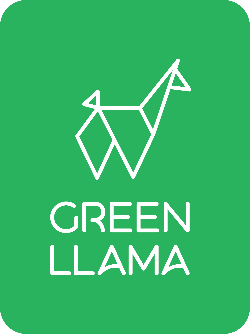The Definitive Guide to Natural Stain Removal (for Every Kind of Stain)
by Kay Baker on Nov 24, 2025
Green Cleaning Guides
The Definitive Guide to Natural Stain Removal (for Every Kind of Stain)
Transparency note: This article cites government sites, standards bodies, and peer-reviewed sources wherever possible. Educational only, not medical or legal advice.
It’s a moment of slow-motion horror. The mug of dark roast coffee tipping over onto your crisp, white shirt. The glass of red wine splashing onto the new rug. That sinking feeling when you see the fresh green grass stains on your kid’s best pair of jeans.
Your first instinct might be to reach for a brightly colored spray bottle filled with a list of unpronounceable chemicals a solution that often feels like trading one problem for another.
But what if your pantry already holds an entire arsenal of powerful, non-toxic stain fighters?
Welcome to the world of natural stain removal. With a little bit of science and the right kitchen-staple ingredients, you can conquer almost any stain life throws at you, without resorting to harsh chemicals. Let’s break down the battle plan.
The Rules of Engagement: Your Stain-Fighting Foundation
Before you tackle any specific stain, these three rules will set you up for success:
-
Act Fast: The sooner you treat a stain, the better your chances of removing it completely.
-
Blot, Don’t Rub: Rubbing can spread the stain and push it deeper into the fabric’s fibers. Always use a clean cloth to gently blot, lifting the stain away from the material.
-
Test a Hidden Spot First: Before applying any solution to a large, visible area, test it on an inconspicuous spot (like an inside seam) to ensure it doesn’t damage the fabric or color.
Ready? Let’s assemble your stain-fighting dream team.
Your Natural Stain-Fighting Toolkit
Here are the most common household villains and the natural heroes that defeat them.
The Villain: Coffee, Tea & Red Wine
-
The Enemy: These are tannin stains. Tannins are naturally occurring plant compounds that love to bind to fabric.
-
Your Weapon: White Vinegar or Lemon Juice. Their acidity works to break down the tannins.
-
The Battle Plan:
-
Blot the fresh stain immediately with a clean, damp cloth.
-
Mix a solution of one part white vinegar to two parts water.
-
Gently dab the solution onto the stain, working from the outside in.
-
Let it sit for 10-15 minutes, then rinse with cold water before washing as usual.
The Villain: Grease & Oil
-
The Enemy: These are lipid stains. Water alone won’t touch them; you need something that can absorb and break down the oil.
-
Your Weapon: Baking Soda (or Cornstarch).
-
The Battle Plan:
-
Lay the garment flat and generously sprinkle baking soda over the entire stain.
-
Let it sit for at least 30-60 minutes. You’ll see the powder start to clump as it absorbs the oil.
-
Scrape off the powder. Apply a small amount of plant-based dish soap, gently work it in, and rinse.
-
Wash in the warmest water the fabric can handle.
The Villain: Grease & Oil
-
The Enemy: These are lipid stains. Water alone won’t touch them; you need something that can absorb and break down the oil.
-
Your Weapon: Baking Soda (or Cornstarch).
-
The Battle Plan:
-
Lay the garment flat and generously sprinkle baking soda over the entire stain.
-
Let it sit for at least 30-60 minutes. You’ll see the powder start to clump as it absorbs the oil.
-
Scrape off the powder. Apply a small amount of plant-based dish soap, gently work it in, and rinse.
-
Wash in the warmest water the fabric can handle.
The Villain: Grass, Mud & Blood
-
The Enemy: These are protein and pigment stains. The key here is to use cold water hot water can actually "cook" the protein, setting the stain permanently.
-
Your Weapon: Cold Water & Hydrogen Peroxide (for light fabrics) or a gentle All-Purpose Cleaner.
-
The Battle Plan (for Grass & Mud):
-
Let mud dry completely, then brush off as much as you can.
-
Mix a paste of powder detergent (like ours!) or an enzyme-based cleaner with a little cold water.
-
Gently rub the paste into the stain and let it sit for 20 minutes.
-
Wash in cold water.
-
The Battle Plan (for Blood):
-
Immediately rinse the stain under cold running water.
-
For stubborn stains on light-colored fabrics, carefully apply a small amount of 3% hydrogen peroxide and watch it bubble. Blot and rinse.
-
Wash in cold water.
The Villain: Ink
-
The Enemy: Dyes and solvents. This is a tough one, but not impossible.
-
Your Weapon: Rubbing Alcohol or a simple All-Purpose Cleaner.
-
The Battle Plan:
-
Place a paper towel under the stain to prevent it from bleeding through.
-
Dab rubbing alcohol onto a clean cloth (not directly onto the fabric) and gently blot the ink stain. You should see the ink transferring to the cloth.
-
Keep dabbing with a fresh section of the cloth until the ink is gone, then rinse and wash.
When to Call in the Pros: Your All-Purpose Pre-Treater
While your pantry is powerful, sometimes you need a professionally formulated solution that combines multiple cleaning actions. A high-quality, plant-based powder detergent like our Green Llama Laundry Powder can double as an incredible pre-treater.
Simply make a thick paste with a bit of water and apply it directly to the stain. The combination of plant-based surfactants and natural enzymes works together to break down a wide range of stains before they even go into the wash. It’s the simple, science-backed tool for your sustainable laundry toolkit.
This is a core component of a truly sustainable laundry routine being prepared for any mess, the natural way.
Shop Our Stain-Fighting Laundry Powder





